In Photos: Juno's Amazing Views of Jupiter
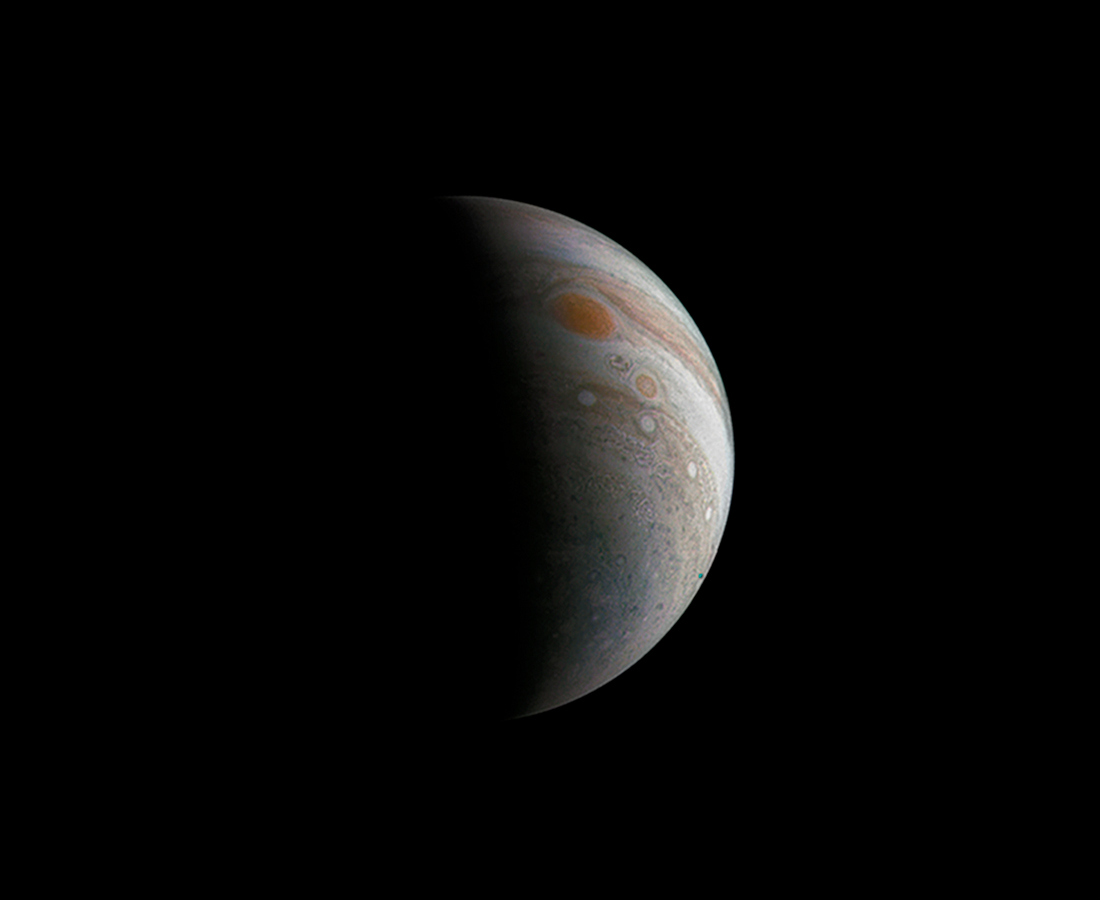
Behold, Jupiter!
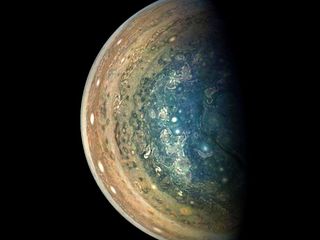
NASA's Juno spacecraft has been orbiting Jupiter since 2016, beaming back spectacular pictures of the largest planet in our solar system. See those amazing Jupiter photos in our mission gallery here.
This Image: Citizen-scientist Gerald Eichstadt processed this image of Jupiter's south polar region, which highlights the distinctive cloud bands that wrap around the gas giant. Read the full story behind this image here.
Dark Anticyclone in Jupiter's NNTB
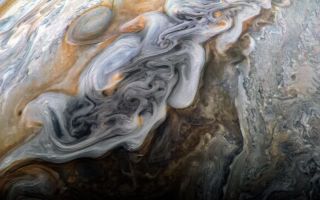
A cyclone swirls through Jupiter's North North Temperate Belt (NNTB) in this new photo from NASA's Juno spacecraft. The NNTB is a prominent band that circles the planet near its north pole. Embedded in this red-orange band of clouds is a gray-colored anticyclonic storm that spins counter-clockwise, or the opposite direction of the movement of other gases in its surroundings. Juno captured this view during a close flyby of Jupiter on May 23, 2018, when the spacecraft was about 4,900 miles (7,900 kilometers) from the planet's cloud tops.
Juno View of Jupiter and Great Red Spot
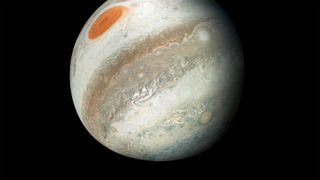
NASA's Juno spacecraft captured this image of Jupiter on April 1, 2018. Citizen-scientists Gerald Eichstädt and Seán Doran processed data from Juno's JunoCam instrument into this stunning view.
Juno Sees Massive Jupiter 'Anticyclone'
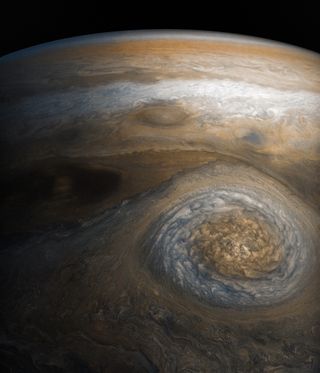
Citizen scientists Gerald Eichstädt and Seán Doran created this image of a massive Jupiter storm known as NN-LRS-1 using data captured by NASA’s Juno spacecraft on July 10, 2017.
Jupiter's Great Red Spot
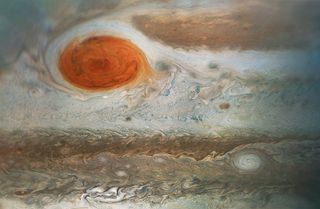
Citizen scientists Gerald Eichstädt and Seán Doran processed this image of Jupiter's Great Red Spot using data gathered by NASA's Juno spacecraft on April 1, 2018.
JunoCam Great Red Spot 2
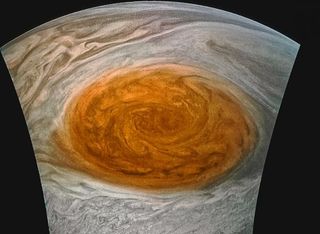
This enhanced-color image of Jupiter's Great Red Spot was created by citizen scientist Jason Major using data from the JunoCam imager on NASA's Juno spacecraft.
Get the Space.com Newsletter
Breaking space news, the latest updates on rocket launches, skywatching events and more!
JunoCam Red Spot Four
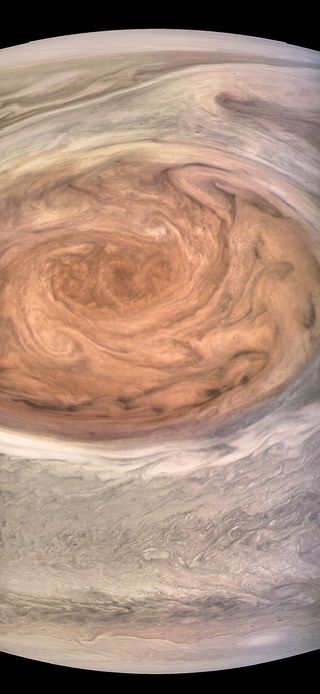
This enhanced-color image of Jupiter's Great Red Spot was created by citizen scientist Kevin Gill using data from the JunoCam imager on NASA's Juno spacecraft.
Juno View of Great Red Spot: 3
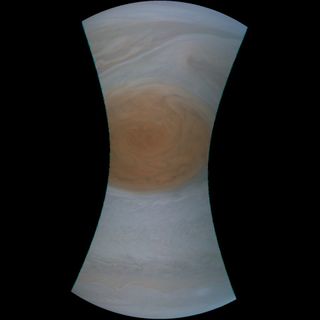
Another raw JunoCam image of Jupiter’s Great Red Spot captured during Juno’s July 10 flyby, which brought the probe within 5,600 miles (9,000 kilometers) of the storm’s cloud tops.
Juno View of Jupiter’s Great Red Spot
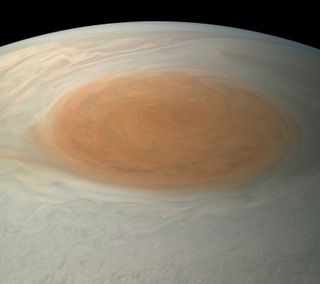
This true-color image shows what Jupiter’s Great Red Spot would look like to a human observer from the position of NASA’s Juno Jupiter orbiter. Citizen scientist Björn Jónsson created the photo using data from Juno’s JunoCam imager.
JunoCam Red Spot Three
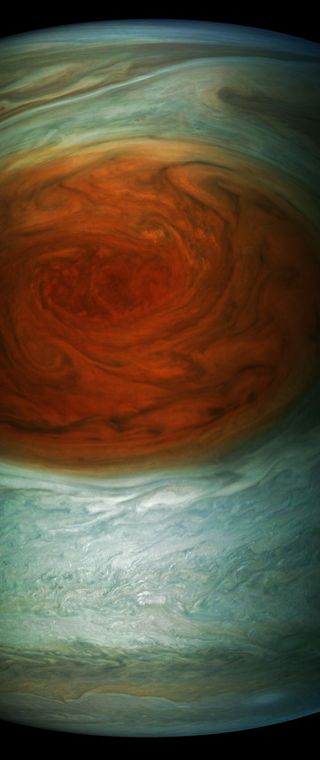
This enhanced-color image of Jupiter's Great Red Spot was created by citizen scientist Gerald Eichstädt using data from the JunoCam imager on NASA's Juno spacecraft. The image is adjusted and strongly enhanced to draw viewers' eyes to the iconic storm and the turbulence around it.
Jupiter's Cloud Bands
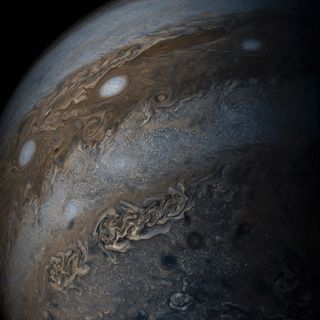
NASA's Juno spacecraft captured this image of Jupiter's cloud bands. These bands extend more than 1,000 miles (1,600 kilometers) into the planet's interior, studies suggest.
Join our Space Forums to keep talking space on the latest missions, night sky and more! And if you have a news tip, correction or comment, let us know at: community@space.com.

Space.com is the premier source of space exploration, innovation and astronomy news, chronicling (and celebrating) humanity's ongoing expansion across the final frontier. Originally founded in 1999, Space.com is, and always has been, the passion of writers and editors who are space fans and also trained journalists. Our current news team consists of Editor-in-Chief Tariq Malik; Editor Hanneke Weitering, Senior Space Writer Mike Wall; Senior Writer Meghan Bartels; Senior Writer Chelsea Gohd, Senior Writer Tereza Pultarova and Staff Writer Alexander Cox, focusing on e-commerce. Senior Producer Steve Spaleta oversees our space videos, with Diana Whitcroft as our Social Media Editor.
Most Popular

